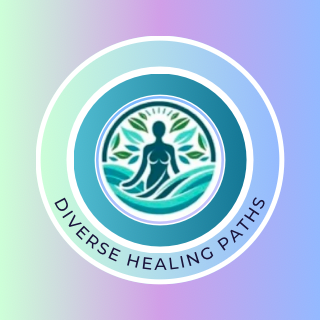What If It Was Just Plantar Fasciitis This Whole Time?
I’ve spent so much time wondering what was going on with my feet.
Was it autoimmune?
Was it my EDS flaring up?
Was it inflammation, or something with my nerves? Something undiagnosed and deeper?
I’ve limped through the house.I’ve sat down from pain that made no sense.I’ve felt frustrated when I couldn’t even stand comfortably at the kitchen sink.
And then recently, something clicked:
What if it’s been plantar fasciitis this whole time?
Not something rare. Not something invisible or dramatic.Just plain, everyday foot strain — the kind a lot of people get — that I didn’t want to believe could be the cause of something this uncomfortable.
I had thought about it before. I even tried wearing shoes in the house once or twice. But it didn’t bring instant relief, so I figured it must be something more complicated. I told myself I had tried.
But now, I’m realizing I didn’t give it a real shot.
Looking Back, the Signs Were There
- The pain was always worst in the morning.
- It showed up when I walked barefoot on hard floors — tile, wood, anything without cushion.
- It flared after standing too long in one place.
- Carpet felt better. Supportive sneakers helped. But I wasn’t consistent. And I wasn’t wearing shoes from morning to night.
At some point, I just assumed this pain was part of my chronic illness package. Another layer. Another thing I had to “just live with.”
But what if it’s not that complicated?
Plantar Fasciitis: What It Is
Plantar fasciitis happens when the thick band of tissue along the bottom of your foot (the plantar fascia) becomes irritated and inflamed. Usually, this comes from too much strain or not enough support.
You don’t have to be a runner or on your feet all day to get it.
You can develop it just by walking barefoot on hard surfaces every day — especially if you already have joint issues, unstable ligaments, or arch problems (like so many of us do).
It causes:
- Stabbing or burning heel and arch pain
- Stiffness when getting out of bed
- Pain that sometimes eases up but returns if you’re barefoot or standing too long
Sound familiar?
I Thought It Was Something Bigger
When you live with chronic conditions, you start to assume every symptom is part of the bigger picture. You stop believing in simple explanations. You prepare for the worst.
That’s how I missed this.
And I know I’m not the only one.
I was so focused on ruling out scary diagnoses that I overlooked the fact that I was walking barefoot across hard tile floors, day after day — with no support, no shock absorption, and no idea what that was doing to my fascia.
What I Did Wrong
- I wore house shoes sometimes, but not all day.
- I wore slippers that were soft but had no true arch support.
- I kept going barefoot because it felt “normal.”
- I didn’t realize that every step on a hard surface was adding up — slowly straining my feet more and more.
But when I finally committed to wearing real support all day long, something started to shift.
What’s Helping Me Now
I’m still healing, but here’s what’s made a difference:
1. Shoes, All Day
No more barefoot walks across the kitchen. I keep a pair of Zebees or OOFOS by my bed. I put them on first thing in the morning and don’t take them off until bedtime.
2. Rolling My Feet
A frozen water bottle is my go-to. I roll my arches over it in the morning and again at night. It helps reduce inflammation and tightness.
3. Stretching My Calves
Tight calves can make plantar fasciitis worse. I stretch them a few times a day — even while brushing my teeth.
4. Paying Attention
I track which days feel better or worse and what I did differently. It’s helping me stay consistent and aware of what actually helps.
Could It Still Be Something Else?
Of course it could. But if your pain gets better (even a little) when you wear supportive shoes, or worse when you’re barefoot, that’s a strong clue it might be plantar fasciitis.
Autoimmune foot pain usually comes with other signs — joint swelling, heat, stiffness that lasts all day, or systemic symptoms.
But this? This pain responded to something simple.
And that matters.
A Kind Reminder to Myself
Sometimes healing doesn’t come in big, complicated breakthroughs.
Sometimes it comes in simple, repeated choices — like putting on supportive shoes even when it feels silly. Like being willing to believe the solution might be easier than I thought.
I don’t need to solve everything at once.
But I can support my feet. I can start there.
And I can trust that not everything has to be hard.
If you’ve been wondering what’s going on with your feet — or if you’ve just accepted the pain without question — I gently encourage you to try something different.
Try wearing shoes inside for a week.
Try rolling your feet and stretching your calves.
Just see what happens.
You might be surprised.
And if this spoke to you, feel free to reach out. I’d love to hear your story. Let’s remind each other that healing is possible — even when we’ve given up hope. Even when the answer turns out to be something simple.
With love and light steps,
Heidi
